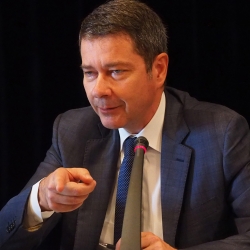


Video interview with Sergio Urbani – General Manager of Cariplo Foundation

Video interview with Davide Maggi – Referent for art & culture of the Cariplo Foundation

Video interview with Carlo Cerami – President of REDO Sgr

Video interview with Giorgio Righetti – General Manager of ACRI
TRANSITION TERRITORIES OR THE TRANSITION PROJECT
Maria Chiara Tosi, Marta De Marchi, Michela Pace, Università Iuav di Venezia
Designing the transition to greater sustainability is one of the main challenges that many institutions are working on.
There are many areas in which the transition is articulated: housing, agrifood production systems in space, mobility models, production geographies, and finally the environmental transition, linked to the effects of climate change.
In the context of these initiatives aimed at facing the challenge of transition, the role of cities has only recently emerged. In several areas such as transport, health, well-being, social inclusion, pollution control, environmental management, cities have proven to be better equipped than nation…
PEDESTRIAN NETWORKS AS SUSTAINABLE MODELS FOR THE DEVELOPMENT OF CITIES AND INTERNAL AREAS
Carmela Giannino, Rosario Pavia, INU – URBIT
The growing attention to environmental protection, the safety of road networks and the sustainable development of the cities and internal areas of our country, has contributed to relaunching the theme of slow or slow mobility understood as a cycle and pedestrian network.
In particular, pedestrian mobility today represents a great opportunity for urban redevelopment and the enhancement of historic centers and villages in inland areas.
The walking itineraries allow you to fully experience a territory and interact with the local population, the nature and culture of the places, help to revive abandoned villages by offering…
PARADIGMS AND CHARACTERS OF THE PORT CITIES
Antonio Trampus, Ca’ Foscari University of Venice; Luigi Zanin, Regione Veneto
Whether it is a city with glorious seafaring traditions, as well as populous urban centers in the hinterland that have sprung up around the river ports, the relationship between the city dimension and water continues to be a fundamental driver for urban transformation. The same projection of the city-port, disputed between the verticality of the warehouse-houses and the indefinite spatiality of the sea, between the logistic and commercial function that has always been connatural to it and the representation needs of the classes that govern it, constitutes a continuous source…
UNIVERSITY, CITY AND TERRITORY
Carolina Giaimo, Patrizia Lombardi, Laura Fregolent, Stefano Stanghellini
The Conference develops will investigate the relationship between the University and the urban reference systems from three perspectives. The first one is internal. It concerns how a sustainable campus is planned and which models of spatial, environmental, technological and energy structure the campus can have. A second point of view is internal and investigates the synergies between universities and the urban system in terms of the ability to trigger complex processes of regeneration of urban fabrics and the creation of new economies. The third perspective is transversal and develops the University’s…